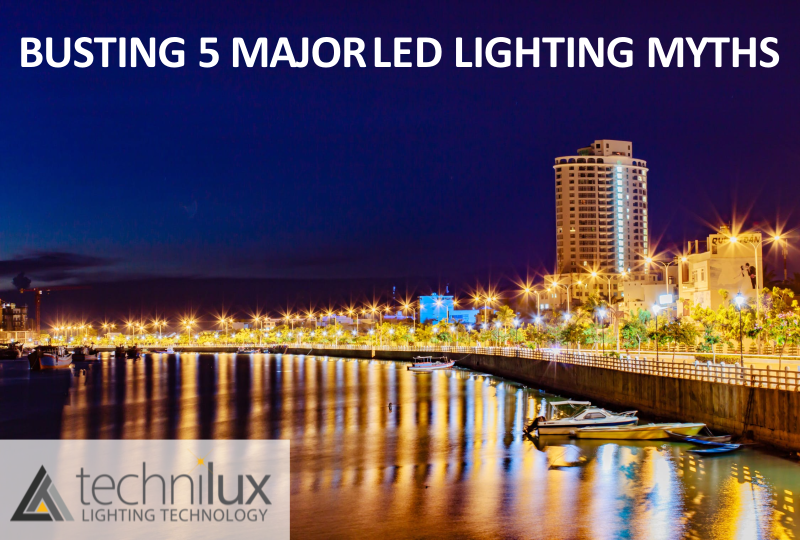There has been a lot of innovation in LED lighting technology. As with all radical changes, there are myths and truths to LED lighting as well. In this blog post, we will separate fact from fiction by busting 5 LED lighting myths. Have a read below!
Myth 1 – LED lighting is expensive
This is one of the myths that has definitely led to the slower adoption of LED lighting technology. While it may be true that upfront cost of LED lights may be a little more expensive than incandescent lighting, modern manufacturing, competition, and cheaper equipment have led to the reduction of the LED lighting cost. Further, the power consumption of LEDs is much lower than, e.g. incandescent lights and they last a much longer time!
Myth 2 – All LED lighting shines with bright white light and is too blue
This is quite untrue. The fact is, LED lights come in various color temperatures. Based on the setting, you can get the right color for your needs. Broadly, the following is a guideline:
- 2700K to 3000K – Warm to soft white
- 3500K to 4100K – Cool white
- 5000K to 6500K – Daylight
Myth 3 – The most important considerations for comfortable LED lighting are brightness and average lux levels
Our eyes actually adjust to their environment, so when considering whether or not lighting may cause discomfort, what you really need to consider is uniformity. Whether in daylight (10,000 lux) or in a well-lit room (500 lux), our eyes respond to contrasts in lighting; the greater the contrast, the more the discomfort. So, if you are implementing a lighting solutions, try to keep the lighting as consistent as possible.
Myth 4 – LED lighting does not do much for the environment
The fact is, LED lighting technology is better for the environment! LEDs do not contain the harmful mercury that fluorescent or CFL lights do. When bulbs such as them break, mercury leaks into the environment and can get into water supplies. Also, as we have said in Myth 1, LED lighting consumes much less power, so that is definitely good for the planet!
Myth 5 – It is difficult to achieve the effect of deliberate optics with LED lighting
People with past experience with HIDs may find this relevant – older technology such as this used in sports lighting had the distribution that neared 360 degrees. This is not the case with LEDs today – they are more directional and allow for greater efficiency and more directional optics, making them ideal for commercial settings.
With some of these LED lighting technology myths busted, we hope that you feel better informed. Have a look at our range of LED lighting services & products. And if you have something that you want to discuss, get in touch with us!

